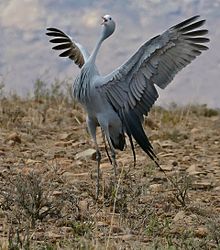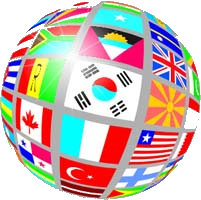South Africa -- School-age
South Africa
Official Name: Republic of South Africa (RSA)
Government Type: Parliamentary Republic
Capital: There are 3 cities that serve as capitals: Cape Town, Pretoria, and Bloemfontein.
County's inhabitants: South African.
Abbreviation: ZA
An abbreviation of Zuid-Afrika which is Dutch for South Africa.
Currency: Rand (R, ZAR)
Official Languages: There are 11 official languages in South Africa:
isiZulu, isiXhosa, Afrikaans, Sepedi, Setswana, English, Sesotho, Xitsonga, siSwati, Tshivenda, isiNdebele.
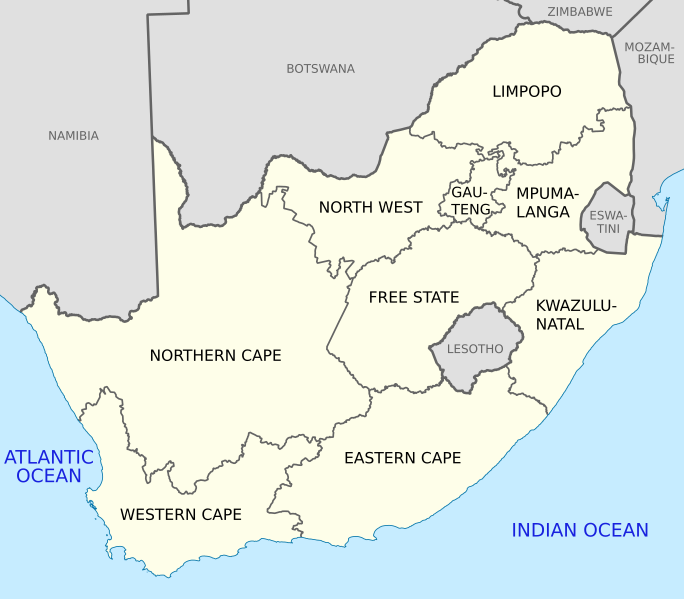
South Africa is a country located at the southern tip of Africa.
The land-locked countries Lesotho and eSwatini (formerly Swaziland) are completely encircled by the Republic of South Africa.
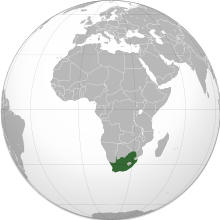
Government
South Africa has a parliamentary system with a three-tier system of government and an independent judiciary. The president of South Africa is head of state and head of government.
The government is divided into three branches: executive, legislative, and judicial. Each branch of government is administered in a different city. Pretoria is home to the executive branch. Cape Town is the legislative capital and Bloemfontein is the judicial capital.
Nelson Mandela was elected president of South Africa in 1994 and served until 1999. He was the first black South African to hold the office of the president of South Africa.
South Africa is called the "Rainbow Nation", a term coined by Archbishop Desmond Tutu, on the possibility of interracial harmony in South Africa . The term "Rainbow Nation" was later adopted by then . There are 30 plus ethnic groups in South Africa with the Zulu being the largest group.
The Story of Apartheid Video
Flag of South Africa
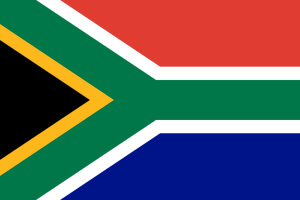
The person who designed South African's flag South African Herald Fred Brownell. In 1993, a public completion with more than 7,000 entries and none of the designs were satisfactory. Fred Brownell was asked to design the new flag for South Africa, within a week.
"My mind started wandering," he recalls. "And then it struck me - aren't we looking for convergence and unification?" The convergence of the disparate groups within South African society, and their unification in one democratic state.
He flipped over the conference programmed and started sketching. Three arms came in from the flagpole side of the flag (the "hoist") and became one.
"I was struck by the extent it resonated with what Mandela had in mind. 'Yes, it might work!' I thought," Brownell remembers.
-Fred Brownell
Symbols of South Africa
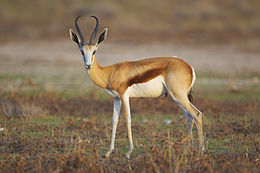
National Animal: Springbok
Land
A plateau is a raised area of land that is flat on top. Most of South Africa is a hugh plateau. The plateau is highest in the east and slopes down toward the west.
South African is composed of three primary regions: the central plateau, coastal plains, and the desert area
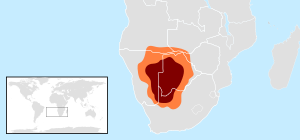
Kalahari Desert (maroon) and the Kalahari Basin (orange)
The semi-arid Kalahari Desert sits in the northern part South Africa.

The Kalahari Desert in South Africa.
The Karoo is a semi-arid desert region of South Africa with assorted succulents and low scrub bushes.
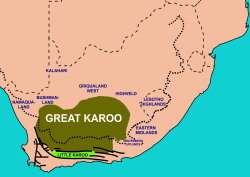

The Namib desert is a coastal desert.
The grassy Highveld (rolling grassland) is the largest region of the plateau. It is highest in the east and slopes down toward the west. It has most of the commercial farming areas, as well as the largest cities.
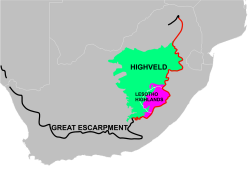
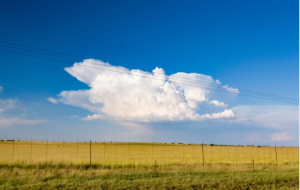
Farming Area of the Highveld.

Shown in red is part of the Great Escarpment known as the Drakensberg.
In South Africa the plateau to the east, south and west is a mountainous region called the Great Escarpment. In includes the Drakensberg Mountains, or Dragon's Mountain, in the east. It stretches for more than 600 miles (1,000 km) and is filled with peaks some more than 11,400 feet (3,475 meters) high.
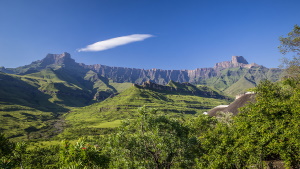
Drakensberg
The longest river in South Africa is the Orange River which rising in the Drakensberg Mountains which forms part of the border between Namibia and South Africa. Rising in the Drakensberg Mountains it flows westward through Lesoto to South Africa joining the Caledon River and flows to the Atlantic Ocean.

Climate
Most of South Africa has a dry, temperate climate with warm summers and cool winters. South Africa is in Southern Hemisphere, with the coldest days from June to August.
Along the coastlines the northward-flowing Benguela Current cools the west coast. The warm Mozambique and Agulhas currents keep temperatures higher on the east and southeast coasts.
These currents accounts for differences in climate and vegetation along the coastline. The colder waters of the west coasts makes those waters richer in nitrates, phophates, plankton, and oxygen. The fishing industries of South Africa are centered on the west coast.
Plants
South Africa has about 9% of all the known species of plants on Earth. The most prevalent environment in South Africa is the grassland.
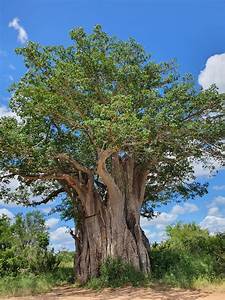
Baobab Tree in South Africa
Elephant Species Differences
Animals
South Africa is a country with a diverse wildlife. It is home to the largest variety of animals in the world.
There are white sharks, fur seals, and dolphins along the coast. Almost ten percent of the world's known birds, fish and plant species and about six percent of the world's mammals and reptiles call South Africa home.
The largest land animals live mainly in wildlife parks. Wildlife parks and reserves provides sanctuary for many animals and birds.
South Africa Is Famous For
South Africa is rich in minerals and mines. About fifty percent of the gold reserves are in South Africa. This country is the third largest exporter of coal in the world. It is one of the world’s leading producers of diamonds.
South Africa Products
Things to Do
South Africa Country Study mini books
Ndebele-Inspired Geometric Pictures
The Northern Ndebele people are an ethnic group in Southern Africa.
South Africa Flag and Map color page
South Africa President - Nelson Mandela color page
South Africa President - Thabo Mbeki color page
Recommended Books
My Painted House, My Friendly Chicken, and Me
by Maya Angelou
Not So Fast Songololo
by by Niki Daly
Gift of the Sun: A Tale from South Africa
by Dianne Stewart
See Also


